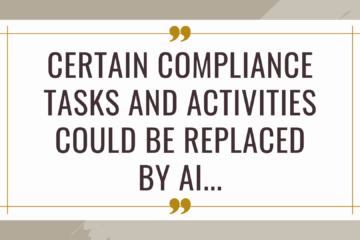Why Compliance Should Be Managed As A Revenue Center, Not A Cost Center
More and more of my students and clients begin to manage compliance as a revenue center and they find this approach to be helpful.
If you have not yet considered this approach within your company, here are the most important reasons to try:
The majority of the compliance officers admit that their main challenges in running a compliance and risk function are fighting for resources being excluded from important decisions until the last minute and, more broadly speaking, not being appreciated for their contribution. The underlying root cause of this is very much related to the fact that the company’s management does not see a lot of value in compliance activities, other than being able to reduce the cost of compliance as much as possible and delay their investments into compliance as long as possible. In some ways, compliance costs are viewed similar to taxes. Or insurance, at best.
Let’s compare the key differences between a cost center versus a revenue center.
The primary goal of a cost center is to control and minimize expenses. Cost centers are measured based on their ability to stay within budget and reduce costs where possible. KPIs for cost centers often include budget variances, cost per unit, and cost reduction initiatives. Decision-making around cost centers often includes searching for possibilities to automate or eliminate processes, outsource or combine or streamline tasks, improve the timing and efficiency of activities, and otherwise produce “savings”.
A particular problem with compliance costs is that often such costs are presented as “mandatory” or “unavoidable” (for example, costs of audits or audit remediation, or costs of compliance or fraud management tools), that are almost entirely outside of the management control.
The primary goal of a revenue center is to generate revenue and maximize sales or income. Revenue centers are focused on activities that directly contribute to the company’s top-line growth.
Revenue centers are assessed based on their ability to increase sales, attract customers, and generate revenue streams. Success is often measured by revenue growth and profitability. KPIs for revenue centers include sales, revenues or recurring revenues, profit margins, long-term customer value, market share, the share of checkout, customer acquisition, and customer retention. Revenue center managers make decisions aimed at expanding market reach, increasing sales, developing new products or services, customer activation and engagement, and optimizing pricing strategies.
There are many problems with viewing compliance as an “insurance” or “tax”, mainly because buying insurance is supposed to be a passive, low-maintenance activity, and should not impact your key product, strategic decisions, or customer experience. Compliance is just the opposite – it does impact customer experience, conversions, timing, bandwidth, and many other factors that are directly related to revenues.
One of the biggest costs of customer acquisition and customer activation is the cost of customer onboarding and transaction monitoring.
- Only about 50% of the retail customers who start their registration process will complete their KYC and become active.
- Out of the customers who became active, about 80% will become dormant over the first 4-5 months.
- About 80% of the corporate customers who try to onboard with a bank or a FinTech service will abandon the process. The average process of institutional customer onboarding takes 3-6 months and requires the submission of about 50 PDFs and other attachments.
- About 90% of all monitoring rules, scanning rules sanctions and PEP checks end up being dismissed as redundant, duplicate, or false positives.
De-facto compliance rules have a direct impact on the customer acquisition speed, customer acquisition costs, and customer’s ability to have more transactions or fewer transactions. Not treating compliance as a function responsible for revenues is not just ignoring reality. It creates incorrect incentives that drive unhelpful behavior.
When the compliance team does not feel at least partially responsible for revenue generation or customer experience or enabling more transactions, they prioritize other things, such as accuracy, how many checks per customer they do, or how many long reports they produce.
Have you ever seen a sales manager saying that one of their main achievements for the quarter was sales deck preparation and editing? Well, I have seen many compliance officers claiming that their biggest achievement for the last period was the submission of the compliance report.
In addition to improving the flow of customer onboarding and transaction monitoring impact on revenues, compliance has a direct revenue impact when determining which countries or industries are acceptable versus not acceptable.
Let me know if you’d like to discuss how to deploy the ROI method to evaluate your compliance projects and make decisions about investments into compliance resources and tools.
Have a wonderful day today!
Don’t miss this fresh episode on the Compliance That Make Sense podcast today! Listen now!

P.S. On October 30th, join me and learn how to have an amazing FinTech audit experience that feels like a routing predictable process as opposed to being caught up in a stage of emergency and suffering from audit PTSD afterward. We will cover specifically what you need to have in place before, during, and after the audit, share with you how to manage the cost of an audit, discuss the audit scope (cost implications are HUGE), and many more! Click HERE to find out more and join this amazing workshop on how to nail your next FinTech audit like a Pro!


